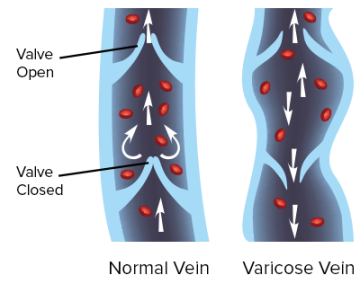Varicose Veins
Find your care
We offer a full range of vein treatments, including ones developed at UCLA Health. Call 310-206-6294 to learn more about our services.
About Venous Disease: Understanding Superficial Venous Reflux
The network of veins in your legs involves three types of veins: superficial veins lie closest to the skin; deep veins lie in groups of muscles; and perforating veins; connect the superficial veins to the deep veins. The deep veins return oxygen-depleted blood back to your heart. Healthy leg veins contain valves, one-way flaps that open when your leg muscles contract and close when your leg muscles relax. These valves keep blood flowing in the right direction and assist the return of blood back to the heart.

Venous reflux disease is a medical condition that occurs when the valves that keep blood flowing out of the legs and back to the heart become weakened, damaged or diseased. This can cause blood to pool in your legs, leading to visible varicose veins, symptoms such as pain, swelling, swollen limbs, leg heaviness / fatigue, and eventually, if uncorrected, skin changes, and skin ulcers.
What are Varicose Veins?
Varicose veins are abnormally dilated and tortuous superficial leg veins. Varicose veins can range from small, thin purple lines just under your skin (known as "spider veins") to thick, bulging blue veins that protrude well beyond the surface of the skin. In many cases, these large superficial veins are initially a cosmetic nuisance; however, varicose veins can worsen over time and eventually cause significant symptoms and even ulceration of the skin, if uncorrected. Men and women of all ages can have varicose veins, although they are more commonly found in women; the frequency of varicose veins increases with age.